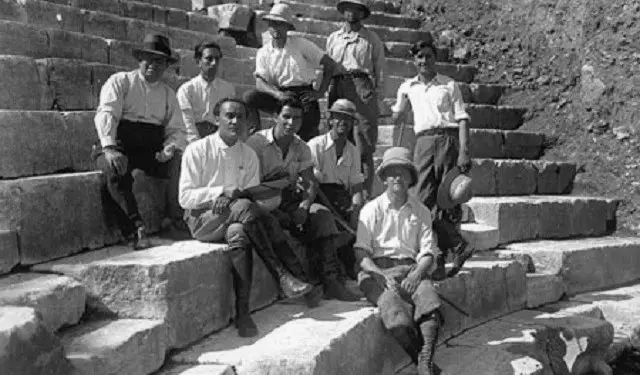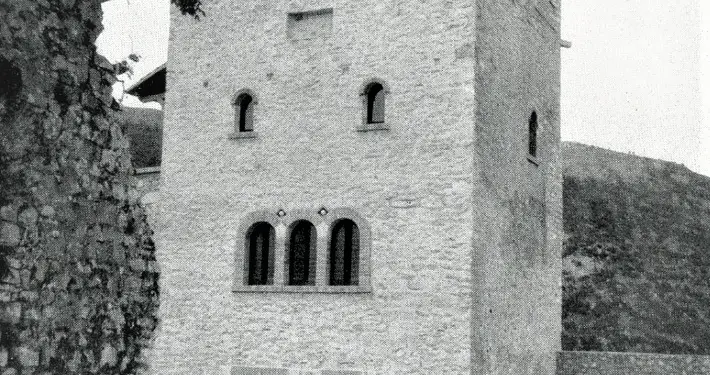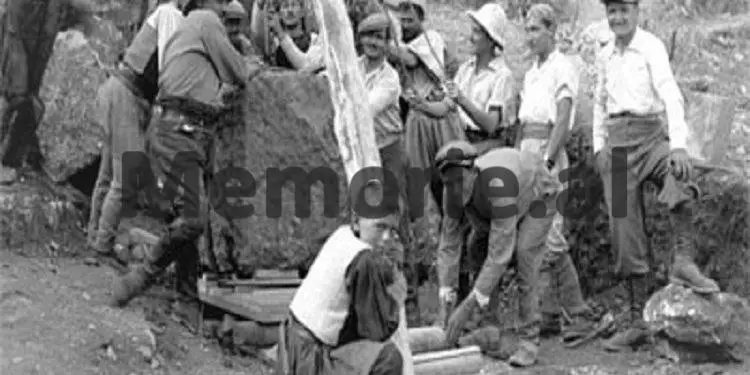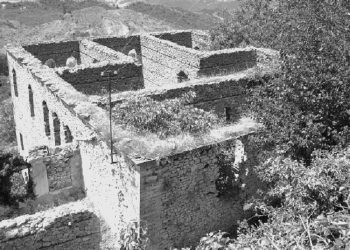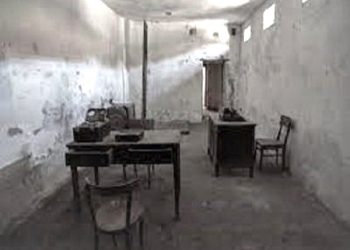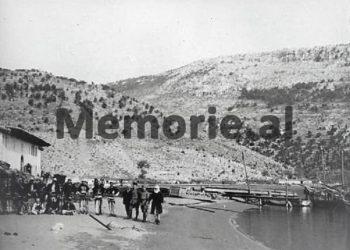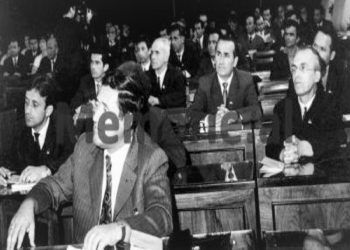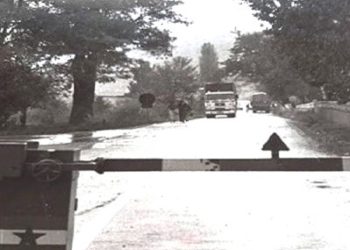By Prof. Neritan Ceka
Memorie.al / In the spring of 1924, Luixhi Maria Ugolini set foot in Albania for the first time, on a journey that would take him first to the north, to Shkodër, and then down to the South, to Saranda and Butrint . The result of the research carried out during that trip was the first volume ‘Albania Antica’, written in the spirit of travelers-archaeologists of the early 20th century, such as Karl Paç (Patsch) and Kamilo Prashniker (Camilo Praschiker). with an attractive combination of the description of the monuments of antiquity, with the ruminations from the exotic scenes of the contemporary Albanian reality. On this trip, Ugolini left aside the large ancient urban centers, Apollonia and Dyrrah, which had been concessioned to the French archaeological mission, led by Leon Rey (Leon Rey), and concentrated on the prehistoric and medieval centers, in the area of Shkodra, or the ancient ones in South Albania.
The collections of the Jesuit and Franciscan Assemblies attracted Ugolin’s attention during his visit to Shkodër, and he has left us the only catalog of the archaeological objects of those collections, with a precision of description and interpretation, which proves a true professional. He is also the first to draw attention to the many mounds found in the valley of the Kir river and in Zadrima, as well as to publish the materials discovered by the dilettantial excavations of the Catholic friars.
Ugolin’s most notable contribution, on his northern journey, was a thorough study of the Koman necropolis. The catalog of archaeological objects originating from that necropolis still retains its scientific value today. It includes, first, the materials of six graves, which had been excavated clandestinely and sold to the Museo Nazionale di Roma, by an Albanian immigrant. Ugolini, not only published those materials, but intervened so that they were returned to Albania, to be exhibited in the National Historical Museum of Tirana.
The catalog also deals with the materials stored in the two Catholic colleges of Shkodra, as well as some other objects of Koman origin, including three rings with mysterious inscriptions. Ugolin’s analysis stands out for a differentiating method, according to which he distinguishes groups of objects with different typological and chronological affiliations, but which date from later objects, related to the early Christian period. He is the first archaeologist who noticed the beginnings of Christianity of the Illyrians, expressed through special objects in the cemetery of Koman.
Equally innovative is the concept of Ugolin in defining the culture of the necropolis of Koman, as a special facies in the local civilization, seeing it in direct connection with the prehistoric Illyrian period, but also in continuity with the contemporary culture of the Albanians. , especially for the way of burial, in coffins made of stone slabs and for the ornaments of the Albanian highlanders. In his analysis, Ugolini created the foundations of a rigorous scientific treatment of Koman culture.
Of course, he could not go beyond the possibilities of his time, as in the case of the commentary, on the rings with inscriptions, when he came too close to dating after c. V (BC), but could not decipher their contents. The continuation of Ugolin’s journey constituted a leap, in terms of geographical distance, but also the chronology of the monuments and objects described by him. The Bay of Vlora represents the second point of its archaeological interest, which is transitory in terms of monuments, but in-depth in the treatment of objects.
The rich collection of the Vlora family is the object of another catalog drawn up by Ugolini, which remains the only documentation for a large number of objects of special value, which disappeared afterwards. This includes, in the first place, “Vajza e Vlora”, in which he identifies a work of a local master, realized with the limestone of Kanina. Also, Ugolini is the first to define the form of a local Illyrian costume in that sculpture. The publication of other archaeological materials, originating from today’s center of the city of Vlora, still remains the only evidence for the presence of a pre-Roman settlement in Aulona.
Continuing his journey to the south, Ugolini stopped longer in Phoenicia, attracted by the extraordinary size of the fortifications of the capital of republican Epirus, which had escaped the attention of archaeologists since the time of their identification by William Martin Leake (W.M. Leake). The typological analysis of the surrounding walls of Phoenicia, once again testifies to the all-round preparation of Ugolin as an archaeologist. He finally clarified the difference between the walls considered Pelasgic, for the time and related to the prehistoric periods, from the megalithic walls of Phoenicia, considering them to be contemporary with the polygonal walls of the same center.
Even the dating of the first period of the construction of the walls of Phoenicia, in the 5th century (BC), is not far from the truth, although at that time, the chronology of the fortifications was not specified, not only for Albania, but generally for the ancient world.
Ugolin’s description of the Phoenician, however, does not include the theater identified by William Martin Leek, which would again surprisingly remain out of focus during his later researches at this center. This was an important visit for Ugolin, charged with emotions, which would later influence his decision to start archaeological excavations in Fonike. The southernmost part of Albania, as it attracted the attention of Ugolin for several other important discoveries, where we can note the wall of Dema and Metoq. However, for some not-so-important reason, he would pass by what would be his future dream, Butrint.
The conclusions lined up at the end of the book represent an innovative effort for the time, both in the comparative analysis of the archaeological material and in the historical context of the ancient written sources. In the treatment of historical material, Ugolini has set several milestones, which remain immovable even today. Such is the case of the dating of some bronze axes, of the Dalmatian-Albanian and Shkodran type, in the late bronze and early iron periods, as well as their typological connections, in the Danubian region and Southern Russia.
For the ancient period, Ugolini presented in a more dynamic way, the relations between the Greek colonies and the Illyrian world, where…”the Greek city was clearly distinguished from other cities and from the Illyrian territories, in the middle of which it was located”. Thus, telegraphically, a distinction was established for the first time between the typical Greek colonial city of Apollonia and the cities of the Illyrian hinterland, which, however, Ugolini did not detach from the cultural-Hellenic context.
Ugolini is the first, who treated in a wide space of time, the cultural relations between the two shores of the Adriatic, bringing new arguments for an influence of Magna Grecia in the Illyrian territories, as well as for a possible migration of the Illyrians. in the territory of Pulje. The appendices that conclude the book testify to an archaeologist with complete classical training, who treats ancient coins, Greek and Latin inscriptions with the same competence.
Ugolin’s first trip to Albania, unlike the trips of his previous colleagues, heralded not only the appearance of an extraordinary personality in the field of Albanian archeology, but also the beginning of a new style of research, which would be characterized by energy and special intensity.
Regardless of the political connotations that accompanied Ugolin’s activity in later years, Albanian culture inherited from the prominent Italian archaeologist, the wonderful archaeological center of Butrint, as well as a well-known collection of excavation results, for which ALBANIA, the region which is located almost in the middle of the road, of the two centers of the great civilizations of antiquity, Athens and Rome, which, illuminating the ancient world with their light, had somehow cast beams of light on the terrains of local prehistory;
“Albania, which, although separated from the Italian land by the Adriatic, has been closely associated with the millennial legends that recount the exodus of people, from one coast to the other; Albania, once the seat of the noble Illirica gens, for a long time, attracted my attention as a researcher of antiquity and at the same time, stimulated in me the desire to go and see it up close.
I wanted to discover all that was preserved from its classical past, but also from the earliest; I wanted to know the archaeological substratum, of which little or nothing was known and little is still known to this day, although here and there the pickaxe of some German and French archaeologists has tried to strip, or rather, only to open the mortuary mantle, which covers Albanian antiquity. I knew that this people remained to this day, custodians of customs, docks and traditions so ancient that to trace their origins, it is necessary to go down to the Homeric civilization and, to the prehistoric era.
Finally, my desire for knowledge and research found comfort in the thought that; Italy deserves the credit and pride for having given strong impetus to researchers who, with scientific goals different from mine, had crossed Albania and had produced great results, thanks to their skills and perseverance in overcoming difficulties of exploration.
Archeology also had its passionate researchers. I will remember Roberto Paribeni and Biaxho Paçe, who many years ago had made trips to Albania. Their fruitful traces had been confined to a few particular places, so it was good to extend and deepen the field of archaeological research, and I willingly undertook this task by uniting all my modest forces in one great rush. and necessary.
In the spring of 1924, departing from Brindisi, I crossed the Straits of Otranto and arrived at Durrës. From here we went north and then went down to the southern part of Albania. When considering and preparing this trip, I intended to develop a well-defined program of research and study, but then, when I reached the country and began my pursuits, I was forced to abandon the preconceived plan and adapt myself to local circumstances. that showed priority.
Not infrequently by chance I came across monuments that were not really wanted, but that deserved to be marked, as well as, on the contrary, I could not find out what I wanted to see, since long searches and, in most cases, even excavation attempts would be missing. . Therefore, in the North of Albania I mainly dealt with the prehistoric part, above all to discover any traces of the civilization that was owned by the Illyrian people. Regarding Central Albania, I thought it would be a little convenient to deal with it, since this is the only Albanian region that has been sufficiently traversed by archaeologists.
During the European war, the Austrians made excavations in Pojan, i.e. in the center of ancient Apollonia, and conducted some research in other areas. Meanwhile, the French had begun excavations at Apollonia. Therefore, going to places in this region, I would do nothing but take a quick look at what the aforementioned archaeologists had seen and studied. This is why in the present description I only make brief notes on these places, presenting their archaeological bibliography.
Finally, when I visited the southern territory, which was even more colonized by the Greeks and improved by the Romans, I focused my attention with priority on many monuments of this civilization. Often, they were quite interesting. In this way, I crossed most of Albania. Desiring to see what is most important from an archaeological point of view, I have preferred to visit many places and a great number of monuments, instead of seeing a few of them, and dwelling long on them.
In compiling the notes of the trip, I have thought it convenient to describe all the places I have seen, including those where I have not stayed long and where research results have been few. I believe that these notes will be useful one day, which I hope will be quite close to both Albanians and archaeological science, when systematic research of Albanian antiquities begins. Then they will serve as small guiding stones, which will show researchers where civilizations can be found and where they have left their traces. Memorie.al




